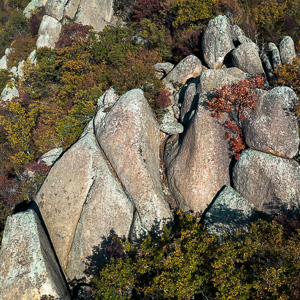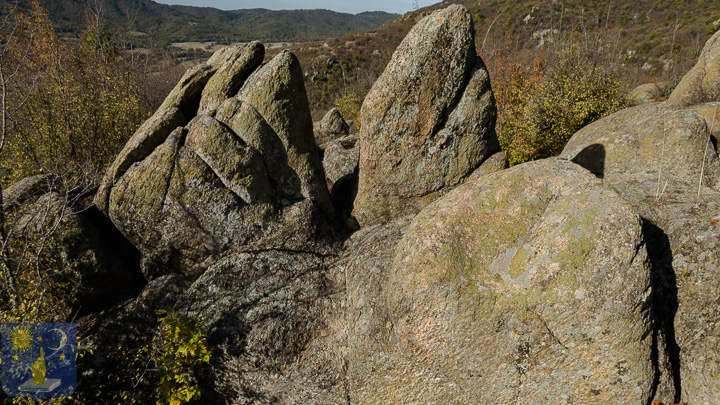
The megaliths remind us of mushrooms that grew from the ground. We see in their shape and position that they were produced bottom-up like plants. They are often tear-drop shaped reminding us of fruits. They are clustered by 3 like a group of fruits hanging from a tree. They have a rounded base and seem to have been shaped by compressing the soft matter upwards to form a cone. Like a plant the stone matter emanated from the ground and was pulled upwards like a plant grows towards the Sun. All this tells us that we are dealing with hardened organic matter that is under the influence of the Sun.
Rudolf Steiner in his account of the Akasha Chronicle related in the series of lectures: Cosmic Memory, Prehistory of Earth and Man, explains how the stone matter emanated from the ground and was shaped by the pyramid builders.
Lemurians knew how to use the rock ensuing from the lava flows of volcanoes.
Men were accustomed to reckoning with this fiery activity in everything they did. They also used this fire in their labors and contrivances. Their occupations were often such that the fire of nature served as a basis for them in the same way as an artificial fire does in human labor today. p.80
And Lemurians had the capacity to transform the natural stone into a composite material to fit his purpose.
[…] in man the forces of nature changed into forces of the will. He himself could thereby execute what nature accomplishes. p.73
The megaliths we see today were made possible by the circumstances that existed on Earth at the time. Air, water, matter had different densities. Stone could be worked to produce different composites, shapes and sizes that are unimaginable in the current physical conditions we live in today.
For in the Lemurian and even in the Atlantean period, stones and metals were much softer than later. p.81
And during the later epoch, the early-Atlanteans that produced relatively smaller better shaped stones used a different technique to mold the rock matter into more precise shapes.
The Atlanteans could control what one calls the life force. As today one extracts the energy of heat from coal and transforms it into motive power for our means of locomotion, the Atlanteans knew how to put the germinal energy of organisms into the service of their technology. […]
The Atlantean could do something else. He knew how one can change the energy of a pile of grain into technical power, just as modern man can change the heat energy of a pile of coal into such power. p.43
Both the Lemurians and Atlanteans used the inherent energy found in and on Earth to apply it to rock matter that was less dense and more pliable. By comparison today matter has become denser and rock has hardened and therefore needs to be chiseled.
The technique used by the pyramid builders to shape the stone tells us about the time when the megalithic sites of Bulgaria were built.
Rudolf Steiner in the lectures “From Limestone to Lucifer“ explains how early stone matter was made from the same elements as plants: Silica, Quartz and Mica.
The environment changed on Earth. It influenced these elements and as a result changed the consistency of matter.
Even today we can witness how matter finds its origins in plants. Coal and petroleum extracted from fracking tells us how plant matter through time and a change in the environment on Earth has rendered plant matter hard as rock.
And in our bodies the branch-like nervous system is a reminder of our previous vegetal state, the First Time when Adam and Eve lived in a garden.
And the quartz lines we find in the granite megaliths reminds us of the veins in our bodies and in the leaves of plants.
We find these soft rounded shaped stones at many megalithic sites across Bulgaria, in the Middle Mountain all the way to the Black Sea.
- Rozovets
Many stones are shaped like tear drops with a larger well rounded base and a more pointed summit.
Sokolitsa
The megaliths especially the most interesting ones that have a diagonal line of quartz running across the front side at around 50 degrees seem to have been molded into the specific shape of a 3 dimensional triangle.
Bania
The stone looks like granite that was once soft and malleable and molded into a rhombus shape on a skewer. It looks like a marshmallow that you would melt on a stick over a fire.
Ivan Vazovo
The central megalith at Ivan Vazovo is a rounded boulder that sits on top of a large elevated stone base. It is propped up into position by smaller stones underneath.
Beglik Tash
All the stones at Beglik Tash have a polished rounded shape.










